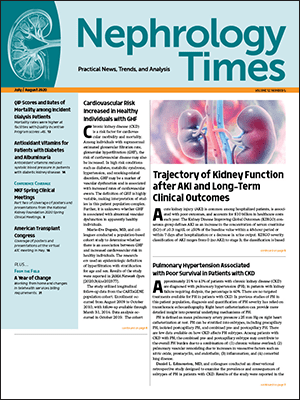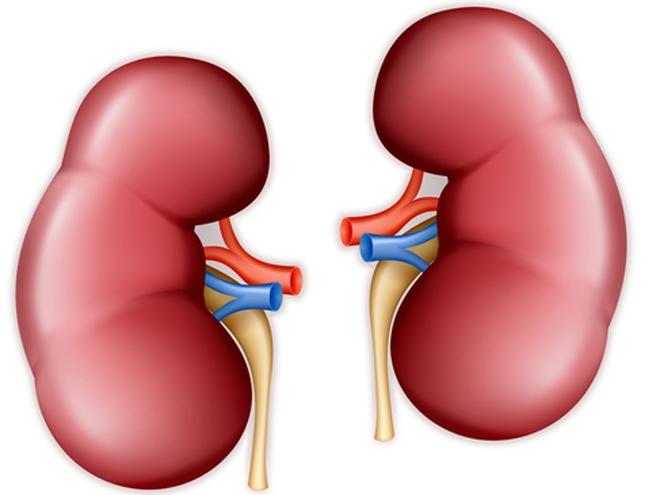
Optiflux® dialyzers, single-use, high-flux dialyzers, are available in four sizes: F160 NR (1.5 m2), F180NR (1.7 m2), F200NR (1.9 m2), and F250NR (2.5 m2). The dialyzers are designed to enhance small and middle molecule clearance without increasing loss of albumin. Epidemiologic studies among patients on dialysis have suggested that low levels of serum albumin are markers of increased risk of mortality.
In patients with low serum albumin levels, albumin loss should be avoided. Meijiao Zhou, PhD, and colleagues at Fresenius Medical Care Renal Therapies Group and Fresenius Medical Care North America, Waltham, Massachusetts, conducted a retrospective study to examine changes in biomarkers of patients dialyzed with Optiflux dialyzers for 6 months. The analysis included a subset of patients with low serum albumin levels at baseline. Results of the study were reported online in a presentation at NKF 2020 Spring Clinical Meetings. The presentation was titled Evaluation of Biomarkers in Chronic Hemodialysis (HD) Patients Dialyzed with Optiflux High-flux Dialyzers.
The study included data from 976 in-center hemodialysis patients treated exclusively with Optiflux dialyzers for 6 months. Exclusion criteria included liver disease, cancer, HIV, or history of drug abuse. Paired t-test was used to compare pre-hemodialysis laboratory results at the first month of data collection (month 1) with those at month 6. A subanalysis of patients with hypoalbuminemia, defined as serum albumin ≤3.5 mg/dL, at month 1 was also conducted. For each dialyzer, all analyses were performed separately. Patients dialyzed with F200NR and F250NR were combined into one group.
In all groups, there were significant increases in mean serum albumin and hemoglobin. For patients dialyzed with F160NR (n=310), mean albumin levels at month 1 and month 6 were 3.80 and 3.89 g/dL, respectively; difference, 0.09; P<.001. Mean albumin levels at month 1 and month 6 for patients dialyzed with F180NR (n=634) were 3.86 and 3.91 g/dL, respectively; difference; 0.05; P<.0001. Mean albumin levels at month 1 and month 6 for patients dialyzed with F200NR and F250NR (n=32) were 3.82 and 3.93 g/dL, respectively; difference, 0.11; P=.02.
Hemoglobin levels in patients in the F160NR group increased from 10.66 g/dL to 11.095 g/dL (difference, 0.39; P<.0001). Hemoglobin levels in the F180NR group increased from 10.82 g/d to 11.08 g/dL (difference, 0.26; P<.0001). Hemoglobin levels in the F200NR/F250NR group increased from 10.91 g/dL to 11.28 g/dL (difference, 0.37; P=.03).
In the subanalysis (n-156), 87% of patients had increases in serum albumin by month 6: 48 of 59 patients in the F160NR group (81.4%); 82 of 92 in the F180NR group (89/1%); and 5 of 5 in the F200NR/F250NR group (100%).
“During a 6-month follow-up, hemodialysis patients dialyzed with Optiflux dialyzers showed increases in serum and hemoglobin while maintaining dialysis adequacy,” the researchers said.
Source: Zhou M, Ficociello L, Costanzo M, Mullon C, Kossman R. Evaluation of biomarkers in chronic hemodialysis (HD) patients dialyzed with Optiflux high-flux dialyzers. Abstract of a presentation at the National Kidney Foundation 2020 Spring Clinical Meetings; abstract #282.







 © 2025 Mashup Media, LLC, a Formedics Property. All Rights Reserved.
© 2025 Mashup Media, LLC, a Formedics Property. All Rights Reserved.